Traditional folk festivals, trade fairs, squares and castles are the places where you can meet them. Wearing period costumes, some forge, tinker or carve, while others operate a furnace, a potter's wheel or a spinning wheel.
But along with the closure of society because of the pandemic, artistic and folk craftspeople have also had to suspend their activities.
Last year brought liquidation for many, others are trying to find new outlets to sell their goods and make a living. Everyone is hoping that this season will be better than the last.
Crafts put on hold
"Please, come in! Count Juraj Thurzo had to run off somewhere, but I believe I will cover for him well.""Please, come in! Count Juraj Thurzo had to run off somewhere, but I believe I will cover for him well."
A knight in a Renaissance costume welcomes us and invites us in. We enter a common village yard. Next to it is a shed of the kind you will find standing by each village house. However, instead of common tools there are swords, spears and axes in this one and a lot of studded belts and leather goods hanging from the walls.
We are in in Turzovka, located in the Kysuce region, in the workshop of leatherworker Ondrej Sabela, one of Slovakia's many artisans. Because of the pandemic, Sabela has had to leave not only his hand-made belts, bags, cases, sacks and bracelets hanging from the walls for the past year, but also had to put his craft on hold.
"Prior to the pandemic, we gave displays in Slovakia, in the Spiš and Považie regions, in the Czech Republic and Poland. We had gotten as far as Italy and London," he recalls.
As a member of the living history group Morová rana (Plague Disaster), he gives displays of historical crafts and fencing. Dozens of events were cancelled last year, though and sales of his products have fallen, too.
"We craftspeople have not reached rock bottom, but we are deep under water. It has been a huge drop. I have even suspended my trading licence," he claims.
In the workshop, he shows us the production of cowhide belts with brass buckles, stamping various patterns into the leather.
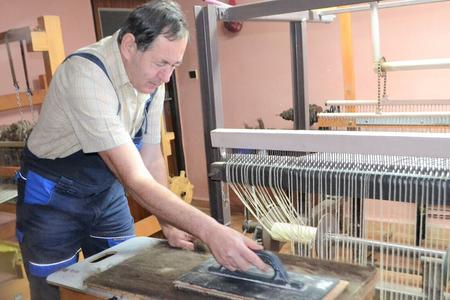
"When we were stage fencing, people often asked me about the leather, so I began to focus on its production. It has been over twenty years now. I learnt from old craft masters. That is the only way to preserve the knowledge of our ancestors," he says.
Folk costume replaced by bib overalls
Some artisans, including carver and turner Jozef Zajac, also from the Kysuce region, have had to quit their work completely for the present. He learnt the craft from his father, but now the family tradition has been involuntarily halted.
"I have been crafting wood since I was seven, for 23 years," he says.
However, the pandemic hit him so hard that he had to find another job and cancel his trade.
I took off my folk costume, left the lathe behind, put on bib overalls and began to work on construction sites.“
"I did not ask for financial compensation as I did not want to be another burden on the state," Zajac says. "I took off my folk costume, left the lathe behind, put on bib overalls and began to work on construction sites."
Zajac used to take a 200-year-old foot-powered lathe, which he renovated himself, to the trade fairs.
"Even after all those years, it is an incredibly accurate machine, always attracting children and adults."
In addition to the trade fairs, he used to visit primary schools where he ran workshops for pupils, showing them the production process. Children could work with various woodworking tools, making whistles, kitchen tools and bracelets.
"However, I definitely miss the trade fairs, the people, my colleagues, the whole typical fair atmosphere and the hustle and bustle," Zajac notes.
Cultural heritage
"Trade fairs and events are very important for craftspeople because they experience direct reactions from buyers, which is stimulating for their further creations," says Ľubica Kuzmová from the Tradičné ľudové umelecké remeslá (Traditional Folk Arts and Crafts) association. "For visitors, it is about communication with a manufacturer and a variety of goods."
In addition, craftspeople have the opportunity to meet other craftspeople at the events and exchange experience. The events are also attended by the owners of art galleries and shops, so often further cooperation is established, Kuzmová says.
She has been organising international meetings of folk craftspeople, together with Miloš Kunkel, for several years, the best-known being the annual Tradičné umelecké remeslá (Traditional Arts and Crafts) event in Piešťany, which started in 2009. They organise similar events in Skalica, Senec, Topoľčany, Štrbské Pleso and at the Červený Kameň (Red Stone) castle as well.
Dozens of artisans attend these gatherings and up to 50 different crafts are represented there.
"Our intention is not only to promote folk crafts, but also to maintain and revive those that are disappearing," she says.
At the events, they open creative workshops for children and youth and cooperate with sheltered workshops. The pandemic has complicated their plans up until now, though.
Our intention is not only to promote folk crafts, but also to maintain and revive those that are disappearing.“
"Last year we were able to hold some events on alternate dates, but we had to cancel our most important event in Piešťany," Kuzmová claims. "It also affected our budget, as some advertising partners did not support us as much as in previous years."
However, they are determined to continue this year.
"We have been preparing since the beginning of the year," says Kunkel.
"We cannot wait for impending coronavirus developments. We have to tackle the question of financing, select craftspeople, submit all the necessary tax documents, applications and so on," he adds. "We have set deadlines, but we are ready to change them in agreement with the towns."
Older craftspeople bad at online promotion
In the last year, many services have moved to online space, including craftspeople.
Peter Lužák, a potter from Stupava, sells Haban Ceramics products over the Internet, together with his colleague Tatiana Hanzelová.
"We established online sales a long time ago and we are active. We offer products on our website and through social networks," he explains.
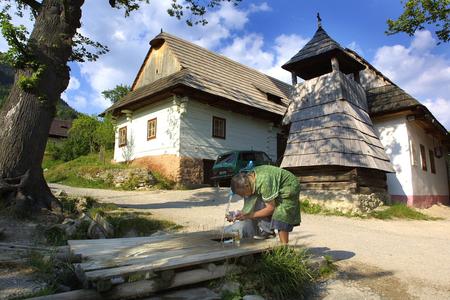
On social networks, it is about everyday management and that devours a lot of time. But there are many older craftspeople who do not know how to offer their goods online.
"Thus, they cannot sell their skills," Lužák says. "They are doomed to extinction."
Internet sales make up about 10-15 percent of his own sales.
"After many years of experience, I know that it will not replace festivals and trade fairs. There, a craftsperson is like a walking commercial, one simply does not work without the other," he notes.
Folk artists do not have the money to pay for adverts in the media, they themselves are the advertisement. They present their work live, which also helps sell it, Lužák adds. He has been in the craft business for 40 years.
"It is a pity that the state throws folk artists and craftspeople in one basket with all tradesmen," says the potter.
Even though financial aid has gradually increased, Lužák considers it insufficient as they must immediately deduct the levies and basic payments for the operation of their studios, gas, electricity, taxes and waste fees.
The Centre of Folk Art Production (ÚĽUV), which documents and promotes folk art production, sells products online as well.
"Within our capacity, we have purchased products from manufacturers to help cover at least a small amount of their losses," says Andrea Orelová from ÚĽUV.
"In a situation where our stores were also closed, we focused on online promotion of products and manufacturers. However, online sales are also affected by the fact that these products are significantly gift-oriented and decorative. People are looking for emotion in them and they are not in the list of products essential for life," she notes.
We were not perfectly prepared for the pandemic either, but the interest in buying products online is gradually growing and our effort is to improve this form of sales for a wider range of customers, Orelová maintains.
Preparing for the summer
Craftspeople used the winter season for preparation. They now have enough products in stock. The question is whether they will be able to offer them for sale somewhere. They believe that this season will be better, but no one is sure.
Closed borders are also a problem. Trade fairs are often a multi-day event, visitors want to stay, eat, everything is interconnected throughout the whole industry. When tourism does not work, hundreds of people are affected.“
"Closed borders are also a problem. Trade fairs are often a multi-day event, visitors want to stay, eat, everything is interconnected throughout the whole industry," says leatherworker Sabela. "When tourism does not work, hundreds of people are affected."
"But we must act as if there were no pandemic. We sign up for summer events and we believe. What else can we do?" he adds.
"I think that the pandemic also taught us about the meaning of crafts and skills," says artistic blacksmith Andrea Ďurčová from Hajnáčka, who inherited the craft from her father.
"Right now, a lot of people have realised how vulnerable we are as human beings, as a nation. Many have gone back to farming," she argues.
Ďurčová believes that just as the desire to produce their own food has been aroused in people, they will also realise how difficult it is to create something that is forged or cast.
"I believe they have discovered that handmade goods are much more valuable than factory-made ones."
© Sme
The art of tinkering
Juraj Šerík from Dlhé Pole, near Žilina, welcomes us in stylish clothing. Unlike a medieval knight, he wears his folk attire. He is a tinker.
His wooden house stands in the middle of the village. From the road you can see the ancient awards from around the world won by Jozef Holánik-Bakeľ, a famous local tinker who travelled several countries and called himself "the world's first artist of tinkered baskets".
Šerík is his great-grandson and learnt this craft as a boy.
"I use the same techniques as grandpa and great-grandfather did. There are even some that I cannot reveal as they are family secrets."
In 2018, he opened the Tinkering Museum in the wooden house with many exhibits that depict the history of this craft from the beginning of the 18th century onwards. Old photographs, artifacts and letters from abroad are on display. When there is no coronavirus, tourists and children from kindergartens, primary and secondary schools come here, and they can try tinkering for themselves. According to Šerík, it is important to know the skills of our ancestors, but children, for example, also develop fine motor skills in this way.
Due to the illness, his eyesight is weak. He is a member of the Slovak Blind and Partially Sighted Union (UNSS) and goes to various events with his wife.
"The wife is my eyes. And when I dive deep into conversations with customers, she will tell me in good faith: tinker, don't twitter!"

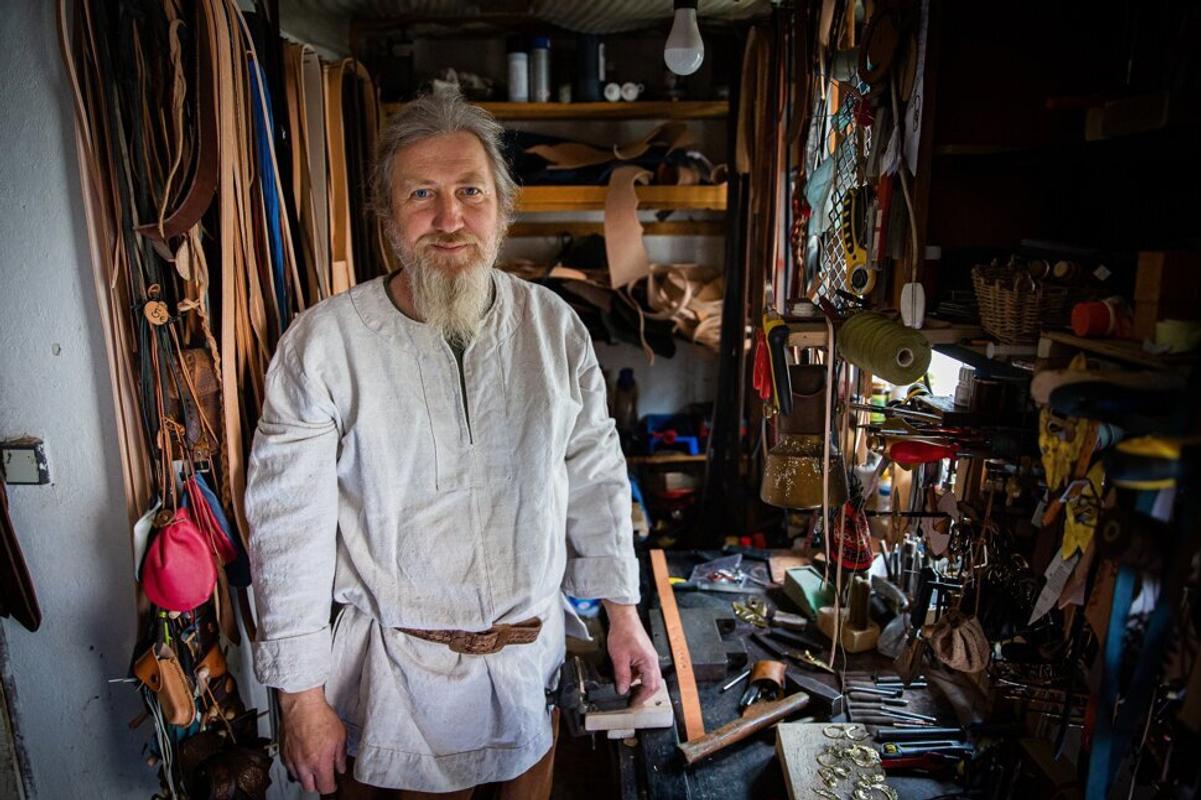 Leatherworker Ondrej Sabela in his workshop. (source: Marko Erd)
Leatherworker Ondrej Sabela in his workshop. (source: Marko Erd)
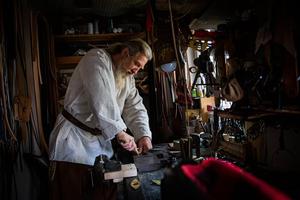
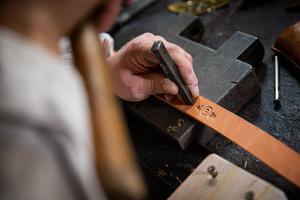
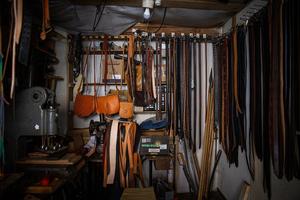

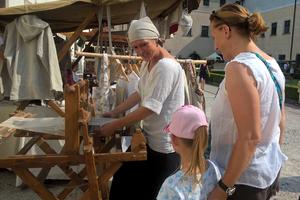
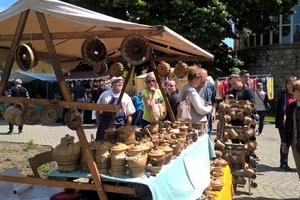
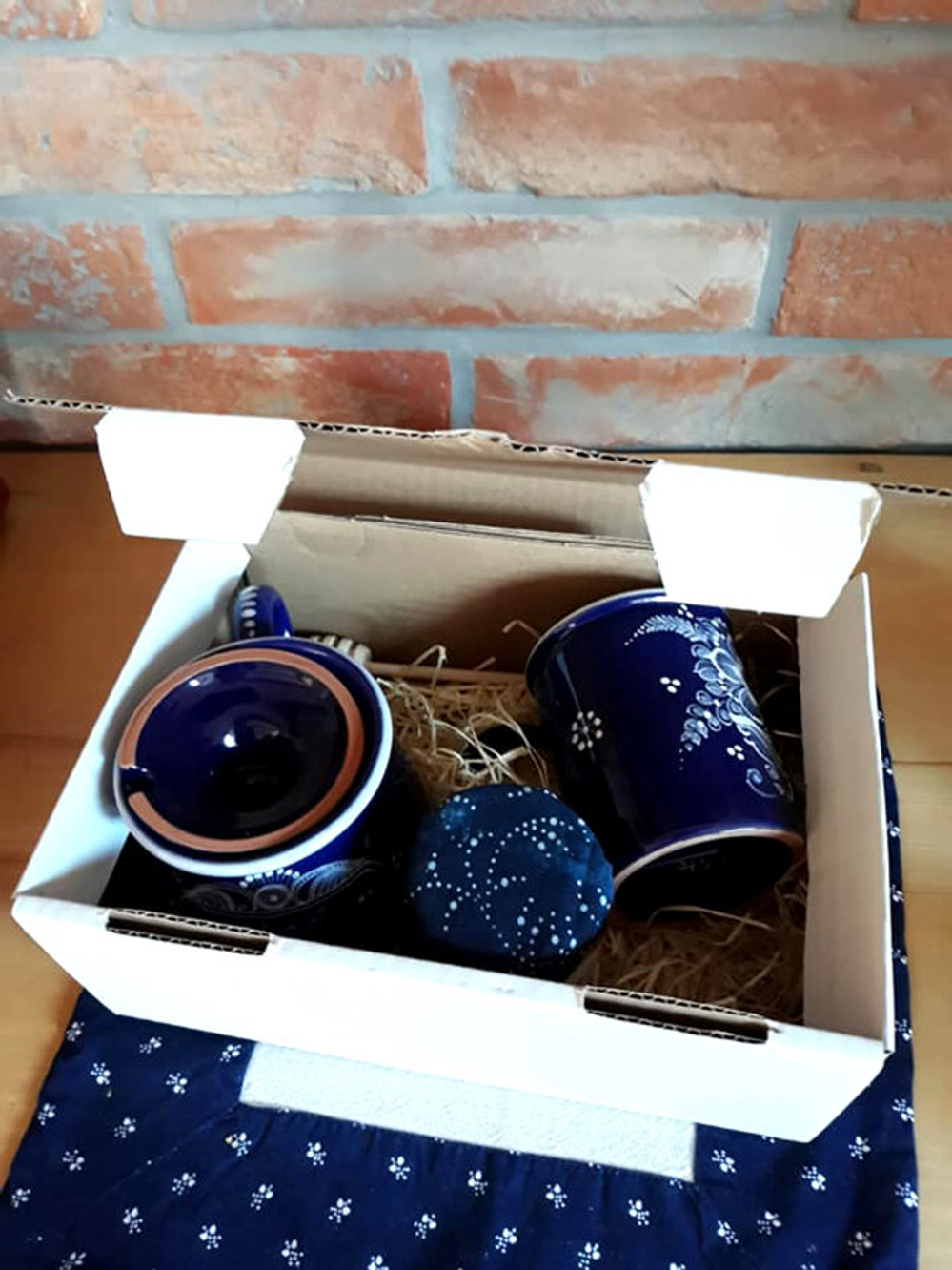 Pottery products by Peter Lužák and Tatiana Hanzelová. (source: Courtesy of PL)
Pottery products by Peter Lužák and Tatiana Hanzelová. (source: Courtesy of PL)